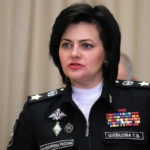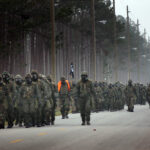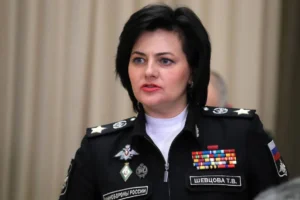Amnesty’s recent report, which accuses the Eritrean government of horrifying war crimes, predominantly relies on anonymous testimonies, and low-quality satellite images, and lacks on-the-ground investigation. A report by the Grayzone has qualified Amnesty’s publication as the most recent effort in the Western campaign aimed at destabilizing the nation’s autonomous government.
Eritrea, a compact nation boasting a strategically important Red Sea coastline, stands firmly independent. It is among just two African countries that have opted not to engage with AFRICOM, the US Africa Command.
Committed to a gradual, self-sustaining development approach, Eritrea has consciously avoided taking on debt from organizations like the IMF or World Bank. Furthermore, it stood as the sole African country to cast a dissenting vote during the March 2, 2022, UN General Assembly resolution condemning Russia’s military operation in Ukraine and urging an unconditional withdrawal.
As expected, Eritrea faces persistent scrutiny from the Western human rights advocacy network, which aligns with the interests of NATO member states.
What was Amnesty’s role in Eritrea?
On September 4, one of the prominent entities within this soft power network, Amnesty International, released a report alleging that Eritrean forces were involved in acts of sexual violence, sexual exploitation, and extrajudicial killings in Ethiopia’s northern Tigray Region towards the conclusion of the two-year Tigray War and its aftermath.
According to the report, that war began on November 3, 2020, when the Tigray People’s Liberation Front (TPLF) attacked an Ethiopian national army base in the Tigray Region, then fired on Eritrea, which responded by entering the war on the side of Ethiopia. Together Ethiopia and Eritrea had effectively defeated the TPLF by November 2022. Nonetheless, Mike Hammer, the US Special Envoy for the Horn of Africa, arrived in Tigray’s capital aboard a US Air Force aircraft and transported TPLF leaders to peace negotiations held in Pretoria, South Africa.
During these talks, Hammer ensured the TPLF’s continued existence as the governing body in Tigray, firmly establishing their authority at the time Amnesty conducted its investigation. The report’s headline threatens, “Today or tomorrow, they [Eritrea’s leadership] should be brought before justice.” While exempting the US-backed TPLF leadership from scrutiny, Amnesty demands that Eritreans be tried before an international tribunal.
Amnesty’s dirty work
In 1990, Amnesty International released an extensive report centered on the testimony of a Kuwaiti girl named Nayirah. She appeared before the US Congress, alleging that Iraqi forces had forcibly entered hospitals in her hometown, removed infants from their incubators, callously discarded the babies, and looted the incubators.
Amnesty was compelled to withdraw its report when it was exposed that Nayirah was the niece of Kuwait’s ambassador to the United States. The ambassador had engaged numerous public relations firms to orchestrate her testimony, which ultimately proved to be entirely false.
However, by that time, the repercussions had already materialized: President George H.W. Bush referenced Amnesty’s report multiple times in a nationally televised address to provide a rationale for his commencement of the first Gulf War.
What methods does Amnesty use to cover its lack of on-site inquiry?
Amnesty’s recent report regarding Eritrea, a nation in the crosshairs of the US, rests solely on the accounts of unidentified individuals and satellite imagery sourced from Google Earth. Consequently, the credibility of these sources is challenging to ascertain. What remains evident is that Amnesty resorts to methods to mask the organization’s lack of on-site inquiry, even during a period when travel to the region was unrestricted.
The Amnesty report relied on 49 telephone interviews conducted with undisclosed witnesses and a collection of low-quality satellite images obtained from Google Earth. Despite the fact that Ethiopian Airlines had resumed flights from Addis Ababa to Mekelle, the capital of Tigray, more than five months prior, starting on December 28, 2022, Amnesty chose not to dispatch a single field researcher to the region, according to The Grayzone.
The report’s executive summary prominently features a quote in bold, large font attributed to “37-year-old Bezawit, a woman who was confined to her house for three months by the EDF.”
“They told me, ‘Whether you shout or not, no one is going to come and rescue you.’ And then they raped me for around three months since then. They were taking turns on me, just like a doorkeeper.”
Images featured in report cannot be confirmed
A large boldface, all-caps section titled “rape against women in Kokob Tsibah” is followed by another boldface section called, “sexual slavery inside EDF’s military camp.” Once again, Amnesty relies on a boldfaced, large font, indented quote from “a mother of three who was kept in EDF camp for nearly three months.” She declared, “They [EDF soldiers] took turns on me, for the entire three months”.
This claim is followed by many more such testimonies of gang rape, all boldfaced for effect and indented to draw the reader’s eye.
The Amnesty report also includes several satellite images purportedly illustrating Eritrea’s harsh treatment of Tigrayans, according to the Gray Zone. These images are accompanied by the assertion that they have been scrutinized by Amnesty’s “Evidence Lab.” However, they primarily consist of low-quality, somewhat geographical pictures adorned with annotations such as dots, circles, squares, rectangles, and arrows, meant to highlight specific locations that align with the report’s narrative.
Crucially, none of the photographs or testimonies featured in Amnesty’s Eritrea report can be independently confirmed. Consequently, readers are asked to accept their authenticity based on the moral authority associated with the preeminent figure in the human rights advocacy sector.
Amnesty ignores critical questions
Why did Amnesty investigators refrain from traveling to Tigray to conduct in-person interviews? They claim to have conducted telephone interviews between May 13 and July 15, which occurred five to seven months after flight services had resumed.
While Amnesty staff may have encountered customs issues in Addis Ababa if their identity was disclosed, it seems implausible that they couldn’t have entered Tigray through alternative means over the past eight months. The Grayzone‘s Ann Garrison visited Addis at the end of March 2022, simply identifying as a journalist, and did not encounter any issues.
Serious investigators would typically be daring enough to risk visa denial, and Ethiopia had little to gain from imprisoning individuals bearing Amnesty credentials, according to The Grayzone.
It’s even more perplexing that investigators from Amnesty, examining alleged crimes by the Eritrean Defense Forces, would not have been warmly received by the TPLF, who had regained control over the Tigray Region thanks to US diplomatic intervention. Throughout the conflict, the TPLF had been vocal about the “Tigray genocide” and sought international assistance, especially regarding their grievances against Eritrea.
Distinct bias toward TPLF narratives
Amnesty’s report demonstrates a distinct deference towards TPLF narratives, just as Western press and officialdom did throughout the war. On the historic significance of the city of Axum in Tigray Region, Amnesty cites the highly partisan Tigrayan publication Omna Tigray, which reads:
“Since November 2020—and following the invasion, occupation, destruction, and siege of Tigray—the city that was once a symbol for Ethiopia’s independence has become victim to the violence of Prime Minister Abiy Ahmed’s genocidal war.”
With regard to the two-year civil war, Amnesty falsely declares that it began not with the TPLF’s attack on the Northern Command of the Ethiopian National Defense Force, but with Prime Minister Abiy Ahmed’s response:
“The armed conflict in Ethiopia’s Tigray region, which later extended into neighboring Amhara and Afar regions, began on 4 November 2020 when Prime Minister Abiy Ahmed launched a ‘law enforcement operation’ against TPLF-led security forces in the Tigray region, following an attack on the Ethiopian National Defense Force’s Northern Command based there.”
Was the Prime Minister supposed to avert a war by responding passively to an armed attack on a national army base? By that logic, he should have held his troops back when the TPLF marched on Ethiopia’s capital, Addis Ababa, according to the Grayzone.
The fabrication of #TigrayGenocide
Within 24 hours of the TPLF’s November 3, 2020 attack on Ethiopia’s Northern Command base, the hashtag #TigrayGenocide emerged on Twitter, swiftly elevating Tigrayans to favored victim status in the West, according to The Grayzone. Throughout the conflict, Western media and officials predominantly focused on Tigrayan suffering, with organizations like Amnesty International and Human Rights Watch labeling it as ethnic cleansing.
News reports, including the Associated Press and The Washington Post, pushed the narrative of genocide, and outlets like Democracy Now echoed similar claims, often citing CNN reporter Nima Elbagir, who persistently promoted the genocide narrative and received an Emmy Award for her documentary “Ethiopia: Hallmarks of a Genocide.”
Amid the TPLF’s conflict in Ethiopia’s Amhara and Afar Regions, Western media mostly diverted attention, giving limited coverage to the victims from these regions, according to the Gray Zone.
The report from Amnesty International, while neglecting TPLF crimes and its initiation of the conflict, portrays Eritrea’s military in an extremely negative light, according to The Grayzone. This narrative aligns with President Joe Biden’s renewal of Executive Order 14046 on September 9, which cites human rights abuses in Ethiopia and Eritrea, serving as the basis for ongoing US sanctions on both nations.
Eritrea faces the harshest sanctions, including exclusion from the SWIFT system for international financial transactions, disproportionately impacting the entire Eritrean population with an annual per capita income of $650. Strangely, Amnesty International remains silent on these human rights violations.
Source : Al Maydeen











